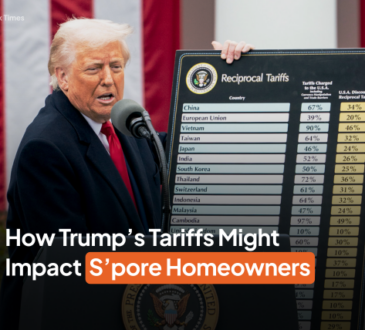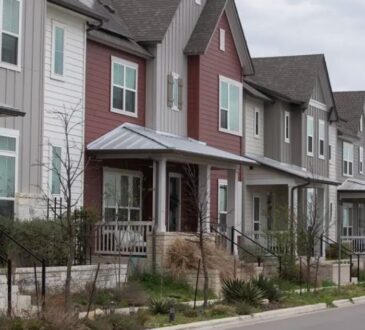
Politicians love a good populist / pander move that targets a widely loathed villain, and one I’m seeing more and more of is proposed legislation to ban or heavily restrict the corporate ownership of single-family homes. On the federal level, there’s the End Hedge Fund Control of American Homes Act, proposed jointly in both houses of Congress in December 2023 by Senator Jeff Merkley (D-OR) and Representative Adam Smith (D-WA). It would prohibit “hedge funds” (defined, according to a New York Times report on the bill, as “corporations, partnerships or real estate investment trusts that manage funds pooled from investors”) from owning single-family homes and give them 10 years to divest their current holdings, imposing stiff tax penalties in the meantime. The revenue raised from those taxes would go to down-payment assistance for individual homebuyers.
There are a number of state analogues of this bill, including most recently in California, where Assembly Member Alex Lee of San Jose has introduced AB 2584, which would prohibit the purchase of single-family homes in California by any “business entity that has an interest in more than 1,000 single-family residential properties.” Similar bills have been introduced in Nebraska and Minnesota.
I’m very skeptical of these bills. It’s not where I’d like to see housing-focused politicians spend their energy. And look; that’s not because I’m on team Hedge-Funds-Owning-Houses. I’m not calling it a pander move because corporate ownership of single-family homes is desirable, or because corporate landlords aren’t particularly problematic in certain ways.
It’s just that these bills attack something that is ultimately a symptom of the housing crisis, not a cause. If written too broadly, these laws could have negative consequences for the availability of badly needed rental homes. And those who think this will “solve” affordability for prospective homeowners in any meaningful way are likely to be disillusioned.
Investors in the Housing Market: Myths Versus Reality
Back in 2015, I lived in a backyard cottage (ADU) behind a small apartment building of eight units in a walkable neighborhood of Sarasota, Florida. The owner of the complex was a middle-aged Canadian who came down a couple times a year. The owner and I liked each other. We’re still Facebook friends, in fact. I was able to call him and plead my case personally when my wife and I wanted to adopt a second cat (not allowed in the lease) and later a dog.
Our rent check was written to “[Street Name] Investments, LLC.” Technically, our landlord was a corporation, even though it was a guy whose personal cell phone I could call. This is a common arrangement for small-time landlords.
The reason I bring this up is not because the proposed laws in California or federally would directly target a mom-and-pop operator like my former landlord; they are written to explicitly focus on larger-scale investment funds. Rather, I bring it up because some very misleading statistics on home purchases have driven the populist narrative about investor owners.
If you’ve read the factoid that “investors” purchase over 1 in 5 American single-family homes sold, this is true. For much of 2023, it was over 1 in 4, according to CoreLogic. The catch is that “investors” is an extremely broad category that includes both my former landlord and his one-off Sarasota apartment building, as well as giant hedge funds and REITs.
In fact, rental properties, from standalone homes to apartment buildings. are almost by definition owned by investors. (The exception would be something like a duplex where the owner lives in one of the units.)
And yet, “investor” gets casually conflated with “institutional investor” or “large-scale investor” in reporting on the subject and in the popular understanding. Even a one-pager on the End Hedge Fund Control of American Homes Act from Senator Merkley’s own website makes the eye-popping claim that “in 2021, large hedge fund investors bought 42.8% of homes for sale in the Atlanta metro area and 38.8% of homes in the Phoenix area.” This stat, from a House Financial Services Committee report, rang immediately false to me: those are simply unbelievable numbers, even for two cities that have high levels of mega-investor activity.
Sure enough, I was able to find a debunking of the claim in an article by The Atlantic’s Jerusalem Demsas, who found the source material. The figures refer not to “hedge fund investors” but to all investors—that is, to say, anyone at all who is buying a home in order to rent it out rather than live in it.
The actual imprint of very large-scale investors on the single-family home market is much more modest, though not insignificant. The Urban Institute released a report in April 2023 called “A Profile of Institutional Investor-Owned Single-Family Rental Properties” and it is very clarifying. As of June 2022, the report estimates that roughly 574,000 single-family homes nationwide were owned by institutional investors, defined as entities that owned at least 100 such homes. This comprises 3.8 percent of the 15.1 million single-unit rental properties in the US. Those single-family rentals, in turn, are about a third of the total rental housing units (46.6 million) in the country; the other two-thirds are in multifamily apartment buildings. And single-family rentals are only about 17% of America’s 90 million single-family homes.
Nearly everywhere, the overwhelming majority of what would be classified as investor-owned homes are owned by guys more like my Canadian landlord in Florida and less like a hedge fund or giant REIT.
Giant investment firms are not harmless. They are expanding their small share of the single-family rental market; in many places, they are buying much more than 3.8 percent of the homes currently being bought by investors. And they’re troublesome landlords. A study in Atlanta found that large corporate landlords were 68% more likely to file eviction notices than small landlords, even after controlling for things like tenant and property characteristics. They nickel-and-dime tenants with exploitative fees; the imbalance of power between a giant and anonymous corporation and an often-low-income tenant means recourse for poor conditions is almost impossible.
Investor buyers, including institutional investors, target specific neighborhoods and cities, often places where rent growth is above average. (The aforementioned Urban Institute report says investor purchases “tend to lag, not lead, rent increases.”) These are often places that are relative bastions of smaller, less expensive “starter” homes; this has certainly been the case in Atlanta, where the initial wave of activity from big funds like Invitation Homes also focused on heavily black neighborhoods. Investor buyers are, without a doubt, a source of frustrating competition for would-be homeowners, who often find themselves outbid by all-cash offers.
It’s just that the investors aren’t the root cause of all this, but rather a symptom of a housing market characterized by chronic shortages and mismatches between the homes Americans are looking for and the ones that are available. If you want to understand why it’s profitable to snatch up starter homes by the thousands, do some renovations and jack up the rent, it helps to understand why we have almost entirely stopped building new starter homes. Or why we underbuilt homes by the millions over the course of the 2010s.
Our housing market is built on the expectation that policy makers will not allow housing prices to fall—not significantly or for long, anyway. The financial markets are in fact dependent on that outcome, specifically on the investment performance of mortgage-backed securities. So it’s not wrong to say that Wall Street is deeply implicated in the problem of unaffordable housing. But not in the sense that “Wall Street owning too many homes” directly through real-estate investment funds is a central cause. That’s a misconception.
Big rental home investors are among the ongoing beneficiaries of a broken status quo. The causes of that status quo, though, are deeply complex. We have a housing crisis because we have a wholly broken paradigm—of housing finance, of local zoning and land-use laws, even of cultural norms and assumptions about what we should want out of our neighborhoods. It will not be resolved by one neat solution.
The danger inherent in a good, simple story about who is to blame for intractable, wicked problems is that it can lead to public policies that are an ineffective distraction at best, and that suck attention away from the deeper systemic reforms we need.
We Should Be More Skeptical of Special Consideration for Single-Family Homes
One of the deep-seated causes of the housing crisis is the cultural and legal primacy that the American housing system gives to single-family detached houses. We moralize homeownership like crazy in America, despite not having actually achieved homeownership rates much outside the norm for a wealthy country. We also zone most parts of our cities to prohibit apartments completely, allowing only single-family homes to be built, even in high-demand areas where much more housing is warranted. This trend began with a widespread war on apartments waged by the early proponents of residential zoning in the first decades of the 20th century. It has only very recently begun to be reversed in some cities and states.
In that context, measures that would crack down specifically on a source of single-family rental homes look a lot more problematic. Already, renting a single-family home is the only way to live in many neighborhoods if you cannot afford to buy. Blanket criticisms of “investors” in such a neighborhood are, implicitly, criticisms of renters as well. Keep in mind the observation I made earlier that every privately-owned rental property is an investment property by definition.
The politics of this issue thus creates strange bedfellows. Alex Lee, who authored the California anti-hedge-fund legislation, is a self-described democratic socialist who has been a champion of reviving social housing in California. No one can describe Lee as anti-renter or pro-segregation. Yet many of the prevalent arguments against single-family home investors have this undertone.
I am constantly coming across the claim that investor buyers “take homes off the market.” They do not. Overwhelmingly, what they do is take homes off the owner-occupancy market and put them on the rental market. This, in itself, is not necessarily a bad thing. Making it harder to offer single-family homes for rent is, in some locations, only likely to deepen the shortage of rental housing that is already responsible for sky-high rents.
Senator Merkley’s fact sheet about the End Hedge Fund Control of American Homes Act proposes that “[h]edge funds and investors must sell at least 10% of the total number of single family homes to families (not companies or any other businesses) per year. And they are banned from selling any single family home to other corporations.” In other words, even my small-time landlord from Florida would not be able to buy a home that a hedge fund or REIT was forced to sell. In some markets, this might produce a meaningful short-term increase in the number of homes available to would-be owner-occupiers. But it would come at the direct cost of a reduction in the rental housing inventory. Rental homes are still homes.
Concerns about the exploitative nature of large corporate landlords are valid, but coming from policy makers, it would ring truer to me if equally applied to the corporate owners of multifamily housing. Large-scale private equity ownership is a newer trend in single-family housing, driven by the wave of foreclosures in the aftermath of 2008. But it’s a much more established trend in apartment buildings. A widely circulated ProPublica exposé of Greystar, the largest apartment landlord in the country, revealed some of the company’s practices geared at maximizing investor returns: skimp on maintenance and services such as trash collection, charge exorbitant and arguably illegal fees, and force out existing households in order to bring in a new tenant at a higher rent.
I would love to see more legislative action to protect tenants from these kinds of abuses, whether they live in a detached home or an apartment building or anything in-between. When the focus is overwhelmingly on the evils of investors in the single-family home market, though, that doesn’t sit right. Nor when the highest policy priority is preventing them from owning homes instead of regulating how they operate them.
It reeks of one of the underlying cultural problems that has driven the housing crisis for decades: in America, we believe single-family homeownership is something that deserves preferential public policy attention, legal protection, and government subsidies. Renters get no comparable consideration for their interests.
What We Can Do Instead
If you want to stick it to large investors and actually promote housing affordability, this zero-sum approach is not the way. Instead, work locally to legalize the next increment of housing in every neighborhood, and support the growth of a community of small developers who will thicken up those places with new units at competitive price points.
Creating a market which more responsively delivers the housing Americans need in the places where there is local demand will undercut the ability of large, distant investors to profit from scarcity. There will still be landlords—”investors” if you will—because there will still be people who need or want to rent their homes. But the corporate REITs and hedge funds, specifically, are a problem we can largely solve or contain if we focus on treating the cause, not the symptom.




